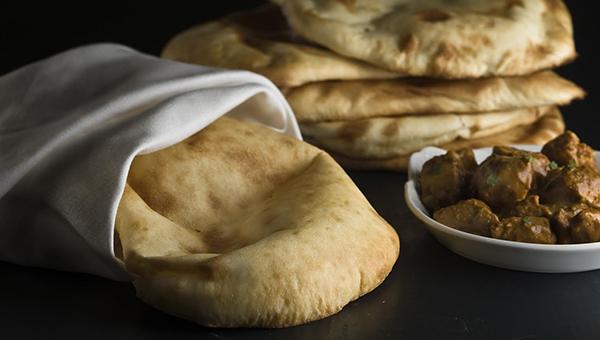Below are a few details on typical Indian staples so you can avoid staring at your plate wondering, “What is this? And how am I supposed to eat it?”
Naan, the literal bread and butter of Indian cuisine, is a type of soft, oven-baked flat bread typical of Southern Asia. It has a rich, but fluffy, consistency, and you should definitely put it in your face. For the adventurous diner, try abandoning your fork and knife, and instead use torn off bits of naan as a makeshift utensil. Dip, scoop, dunk, it’s good no matter what you do.
Tandoori chicken has impressed the palates of Richard “Wasn’t Me” Nixon and John F. Kennedy. It’s prepared by marinating bone-in chicken pieces in yogurt and a special blend of spices including garlic, lemon, paprika, ginger, cayenne pepper and garam masala. The chicken is then roasted at very high temperatures in clay cylinders called tandoors. The brightly colored spices give the chicken a vibrant red color and a wonderfully savory flavor unlike anything else.
The origin behind chicken tikka masala is fairly unclear, but most stories seem to lead back to somewhere in the United Kingdom. It represents the best of Indian food with the spice turned down and the cream turned up for British taste buds. Picture Tex-Mex, but a few thousand miles further East. It consists of chicken tikka (boneless chicken prepared in the Tandoori style) swimming in a rich creamy tomato-based sauce that’s been laced with just enough spice for anyone to enjoy.
It should be noted there are some wonderful Indian dishes for those who do not eat meat. Chana Masala is a citrusy, spicy chickpea stew that pairs well with Basmati rice. Palak Paneer is a fantastic dish made from pureed spinach and Indian farmer cheese. Enjoy the cheesy goodness, and get your Popeye on simultaneously.









